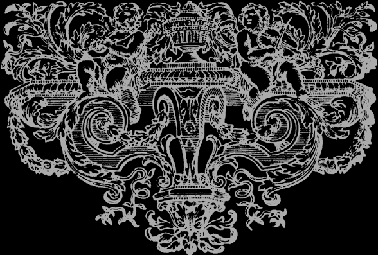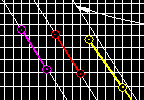
N E W 5 - O C T A V E H A R P S I C H O R D S
I N T H E N E A P O L I T A N S T Y L E
The string-scaling design and soundboard layout
Acoustically, in order to sound their best, the strings in any instrument need to be stretched as tightly as possible, so that the harmonics produced by the string are accurately in tune with one another and with the fundamental note being produced by the string. This means that they need to be brought to as high a tension as possible, to the point where they are almost at their breaking point (they are then said to be critically stressed). At a pitch of about A415, yellow brass strings (with a composition of 70/30 Cu/Zn and a few minor impurities) which are scaled to give Pythagorean scalings are close to breaking when c2 has a length in the range of about 273 to 295mm. This is in the range of about c2 = 12½ to 13½ Neapolitan once. Here, because of the (basically) F1 to f3 compass the instrument was designed by basing the scalings on the lengths of the f strings rather than on the c strings. Therefore the length of f1, a perfect fifth lower with strings that are 50% longer should be in the range 1.5x12½ = 18¾ once to 1.5x13½ = 20¼ once in length. For simplicity the treble scalings were designed on an f1 scaling of 19 once. This would mean that the length of the note 'cello C would be about 2200mm, which is a length that is unrealistically long for a normal harpsichord. Hence the scalings were designed so that C was 90 once (= 1965mm) in length with strings that were Pythagorean from the top note down to the note c, and which then gradually foreshortened from c down to the note C.
For the lowest bass notes two separate bridges were used with scalings for each bridge designed around the characteristics of two slightly different alloys of red brass. The bridge for the stronger type of light-red brass (with a composition of 70/15 Cu/Zn) were chosen to give red-brass strings that were critically stressed with a c2 length of about 210 to 230mm or about 9½ to 10½ once. Again for simplicity the scalings for light-red bass stringing were based on a c2 length of 9 2/3 once (or f1 = 14½ once), and the slack scalings for dark-red brass (with a composition of 70/5 Cu/Zn) were based, again for simplicity, on f1 = 11¾ once.
This gives the following string lengths:
g#3 = 4 once
f3 = 4¾ once
f2 = 9½ once
f1 =19 once
f = 38 once
F = 73 once
C# = 90 once
C = 77½ once
A1 = 92 once
G#1 = 79 once
F1 = 94 once
The notes in yellow were strung in yellow-brass strings, those in red in light-red brass strings and those in violet in dark-red brass strings. Click on the image below to see these scalings plotted as a logarithmic graph:
Click on this image so see a logarithmic plot of the string scalings
The plucking points of the rear register plucking the long string were based on those found on a number of Neapolitan instruments, particularly those of Onofrio Guarracino, and were chosen to be 2 once for f3, 6 once for f, and 8 once for F1.
Return to the main 'Mozart' harpsichord design section

